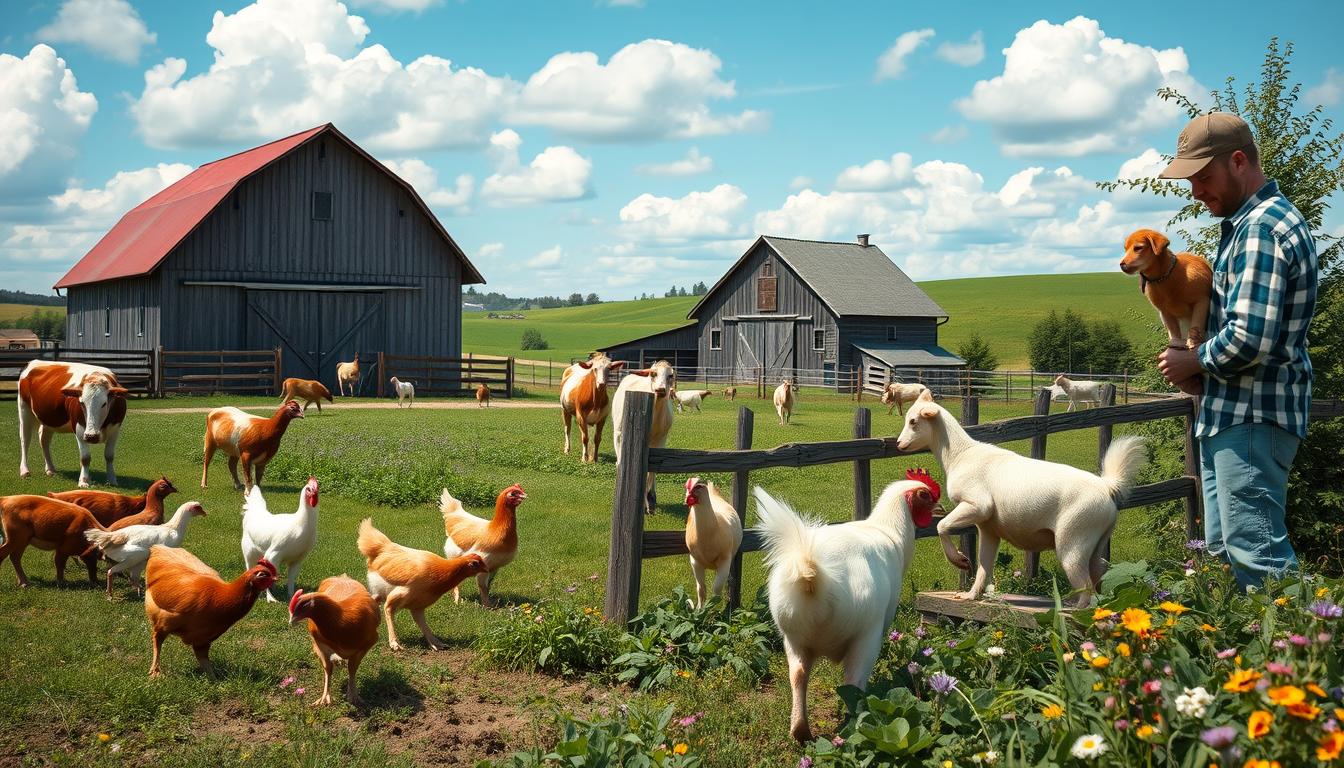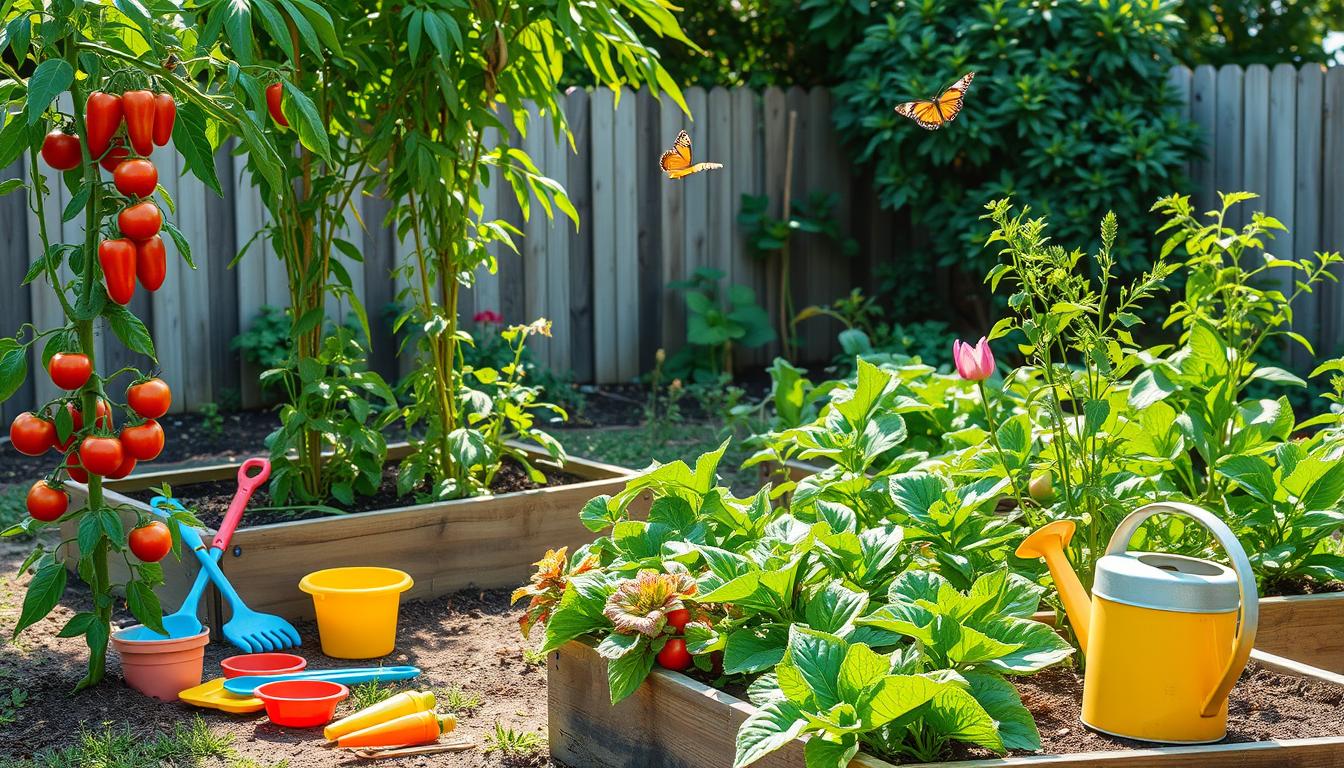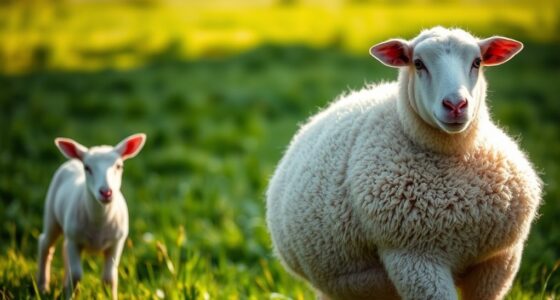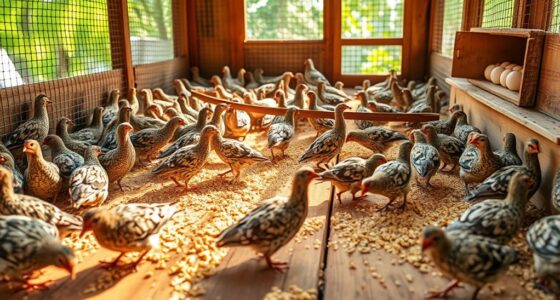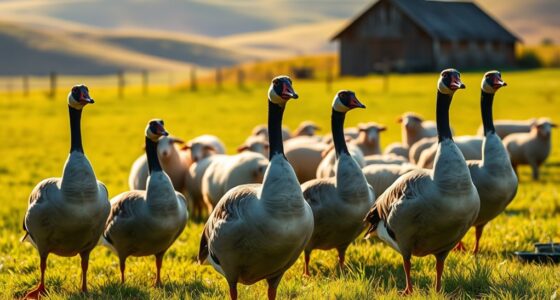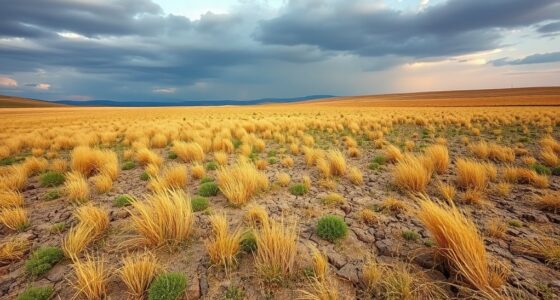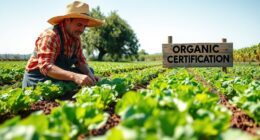Remember your childhood? Maybe you spent lazy summer afternoons on a big farm. You heard the sounds of chickens clucking and cows mooing. It wasn’t just a place. It was a world where animals and people lived together. Everyone played a part in life’s cycle. Now, you can dive back into farm life. From caring for animals to learning practical livestock tips, your early adventures still matter. Farm animals are not just there for farming. They are friends, teachers, and key to farming the right way.
Let’s explore how caring for animals, farming smartly, and the life on a farm are all connected. With over 75 activities, from looking after the farm to gardening and taking care of bees, there’s so much to learn. These adventures offer knowledge not just for farmers. They are for anyone who wants to understand how closely we are tied to animals.
Key Takeaways
- Farm animals play essential roles in sustainability and agriculture.
- Effective animal care leads to better livestock productivity.
- Engaging in sensory play with farm animals can boost cognitive development in toddlers.
- Practical tips can enhance the living conditions and welfare of farm animals.
- Understanding the diverse needs of different species is key to successful farming.
Introduction to Farm Life
Farm life is special because it mixes duties and joys from working with land and animals. It’s important to learn about it due to its impact on agriculture. At its core, farm life is about taking care of animals. This helps our daily living in many ways.
Working with farm animals gives us companionship. Plus, we get products like meat, dairy, and eggs. Farming plays a key role in our economy. It provides food and jobs. Taking good care of animals makes them healthier. This, in turn, benefits the whole community.
Knowing what different farm animals need is crucial. They need air, space, food, water, and shelter. Each animal type is unique. For instance, some don’t have top front teeth which affects their eating. The Aracauna chicken is special too. It lays colored eggs, making farm products diverse.
Living on a farm does more than just keep you busy. It links you to the land deeply. By seeing how important animals are in farming, you learn to create a better environment. This is true for both fun and business reasons.
The Importance of Farm Animals
Farm animals play a key role in agriculture. They do more than just provide food. They help with food security, keeping the environment healthy, and supporting the economy.
Roles of Livestock in Agriculture
Livestock have important jobs in farming. Here are their main roles:
- Food Production: Cows give about 90% of the world’s milk. Chickens lay close to 300 eggs each, boosting egg production.
- Waste Management: Pigs can turn up to 85% of organic waste into valuable manure. This improves soil and cuts down on waste.
- Vegetation Management: Goats eat up to 4 pounds of plants daily. They help control plant growth and keep landscapes healthy.
- Wool Production: Sheep provide about 1.4 million metric tons of wool worldwide. They are vital to the textile industry.
- Pest Control: Ducks eat around 200 insects each day. They help control pests without needing chemicals.
Benefits of Raising Farm Animals
Raising farm animals offers many benefits. Let’s look at a few:
- Economic Diversification: The horse industry is worth about $300 billion a year. This shows the economic value of livestock.
- Food Security: With the world’s population growing, farm animals will help meet the need for more food by 2050.
- Resource Efficiency: Farm animals boost farm productivity. They provide food, help manage waste, and enrich the soil.
- Support for Smallholders: Livestock help small farmers. They ensure quality food production and protection against tough times.
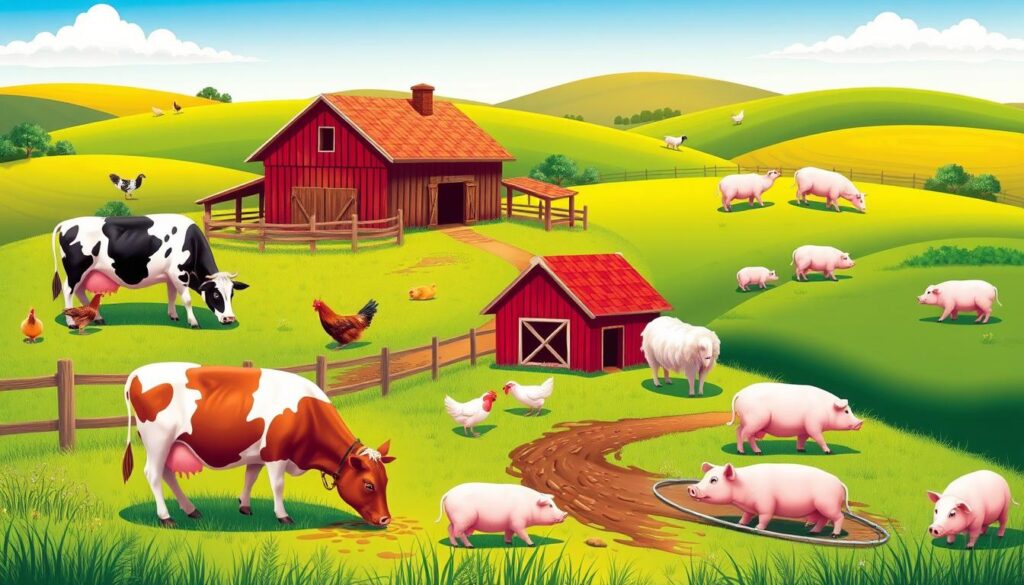
Understanding Different Farm Animals
Farm animals come in various types, each with distinct categories. Knowing about these animals improves farm management and care. You will meet different species like cows, pigs, sheep, goats, and poultry. Each plays a unique role in farming success.
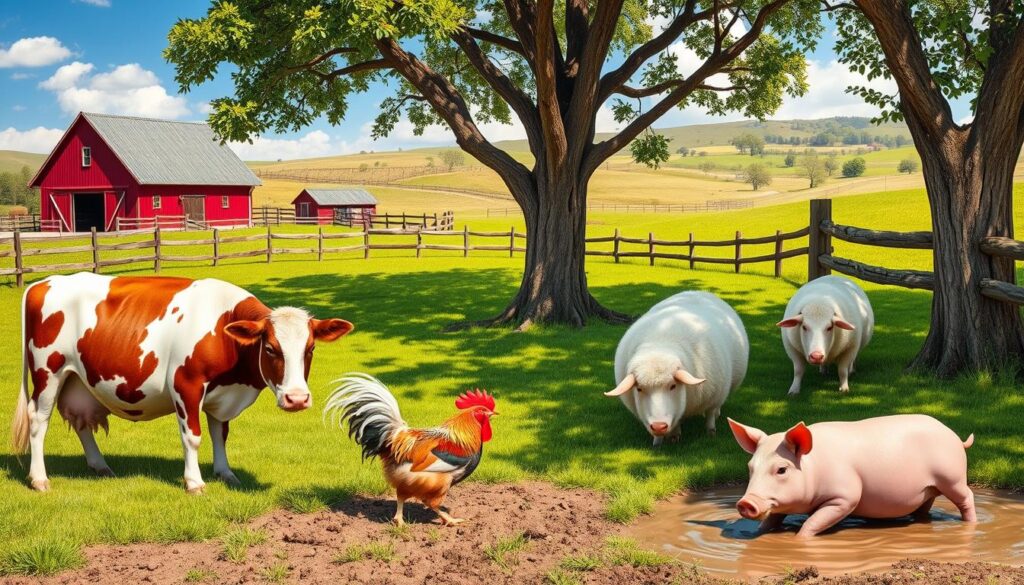
It’s key to know the specific needs of different farm animals. For instance, beef cattle, dairy cattle, pigs, and sheep each require different food, water, shelter, and space. Here’s a table detailing the main features and uses of common livestock:
| Animal | Primary Products | Notable Traits |
|---|---|---|
| Cows | Milk, Meat, Leather | Colorblind; limited depth perception |
| Pigs | Meat, Medical Products | Intelligent and social animals |
| Sheep | Wool, Meat | Good depth perception; social behavior |
| Chickens | Eggs, Meat | Variety in egg color (e.g., Aracauna lays blue eggs) |
| Goats | Milk, Meat, Fiber | Curious and playful; different breeds available |
Knowing about farm animals’ characteristics lets you care for them better. For example, cattle need the right minerals in cold weather for good digestion. This understanding aids in their well-being and productivity. This contributes to your farm’s sustainable practices.
Basic Needs of Farm Animals
It’s key to know what farm animals need to stay healthy. By meeting their basic needs, we improve their health and what they can give us. These needs include food, water, shelter, and enough room.
Food, Water, Shelter, and Space
Livestock need the right food, lots of water, and a good place to live. Different animals eat different things. For example:
- Cows do well on diets full of grass and hay.
- Pigs eat grains and proteins to stay healthy.
- Chickens need proteins and calcium to lay eggs.
- Sheep eat grass but need grains when it’s cold.
Water is vital. Without it, animals quickly get thirsty. Shelter keeps them safe from bad weather and danger. How much space they need varies. For example, chickens are okay in small areas, but cows need a lot of room to roam.
Air Quality and Its Importance
Clean air is just as important as food and water. Good air flow keeps the barn dry and free from bad smells. This means animals are less likely to get sick. Keeping air clean helps animals live comfortably and stay healthy, making sure they can do their best all year.
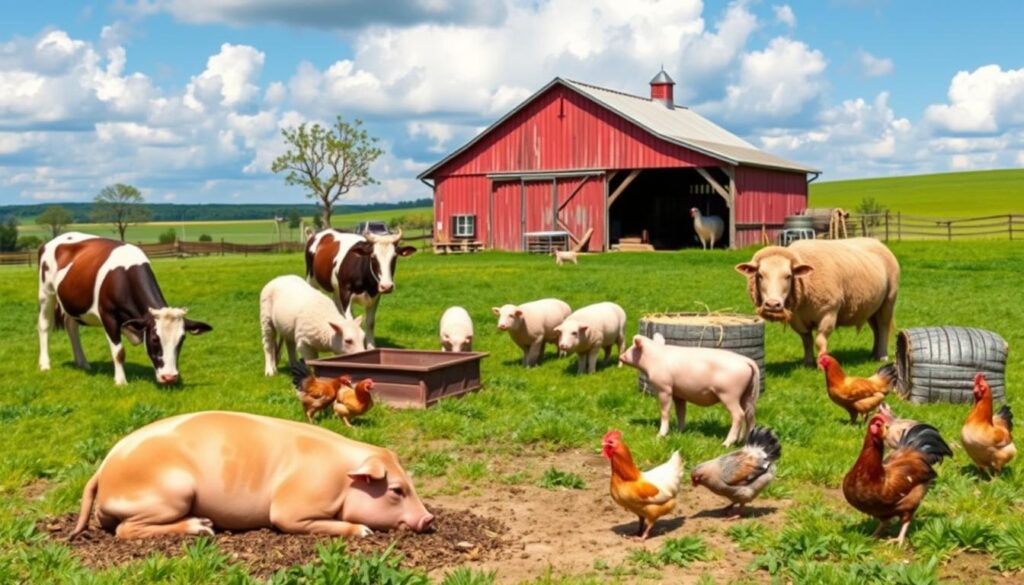
Farm Animals – Farming Tips
Making sure your farm animals are happy and healthy means using special care tips. These should match what each animal needs. Giving them the right shelter, food, and space to move around can really boost their comfort and health.
Creating a Comfortable Environment
Every animal needs its own kind of care. For example, what works for chickens won’t work for cows. It’s important to pick the right bedding like straw or wood shavings. Changing this bedding often keeps their home dry and clean, stopping diseases.
This kind of upkeep not only keeps the animals comfortable but also healthy.
Providing Proper Nutrition
The food needs for farm animals are all over the map. Talking to a vet or a nutrition expert can help pick the right food. High-quality feed and plenty of clean water are key to keeping your animals in top shape. Using automatic waterers helps keep the water fresh and clean.
Also, regular visits from the vet can catch any health problems early. This is a big part of taking good care of your livestock.
The Benefits of Freedom to Roam
Letting your animals move freely is good for them. It keeps them from getting stressed. Make sure they have shade and fresh water, especially when it’s hot. This keeps them comfortable.
When animals can wander, they eat a variety of foods. This is great for their health. Providing lots of space improves their physical and mental health.
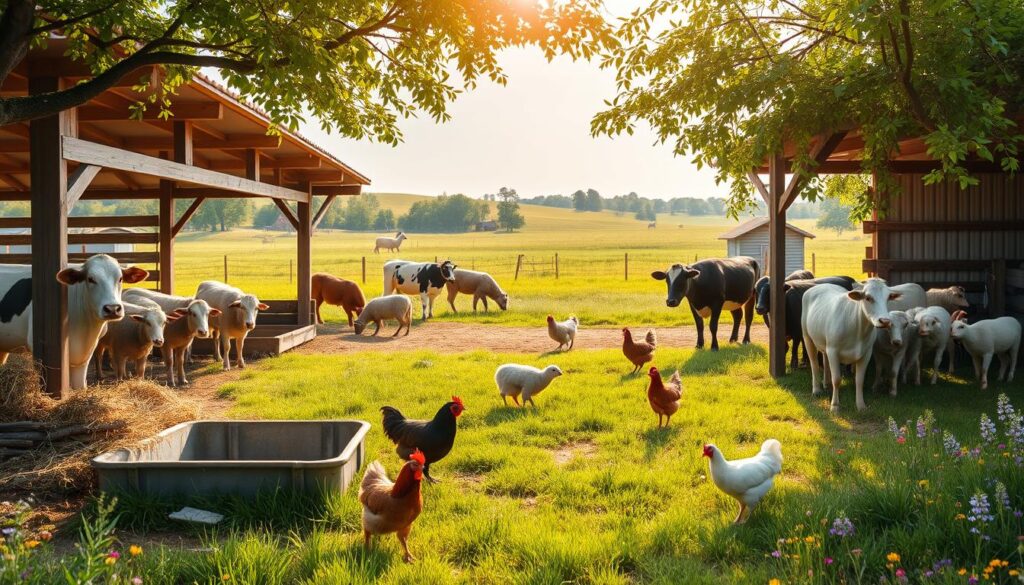
| Livestock Type | Ideal Shelter | Common Bedding Material | Nutrition Needs |
|---|---|---|---|
| Chickens | Coop | Wood shavings | Grains, minerals |
| Cattle | Barn | Straw | Hay, grains, silage |
| Pigs | Pigsty | Shredded newspaper | Pelleted feed, vegetables |
| Sheep | Shelter shed | Straw | Grass, hay, minerals |
Behavioral Enrichment for Farm Animals
Creating a stimulating environment is key for improving farm animals’ lives. It’s especially crucial for their behavior and welfare. Proper social interaction and fun activities help them greatly. They not only live better but are also kept from developing unwanted behaviors.
Social Interaction and its Importance
Herd animals love being with their friends. Activities that let them interact are great for cows, pigs, and chickens. These social activities let them act naturally. They reduce stress, anxiety, and aggression. Safe social activities improve their health and happiness.
Providing Toys and Activities
Adding toys and activities to their living spaces encourages natural habits like foraging. Pigs, for example, love burrowing and looking for food all day. Giving them deep straw for bedding or fun toys keeps them busy. Puzzle feeders and diverse feeds keep their minds active. This fights boredom and is good for their welfare.
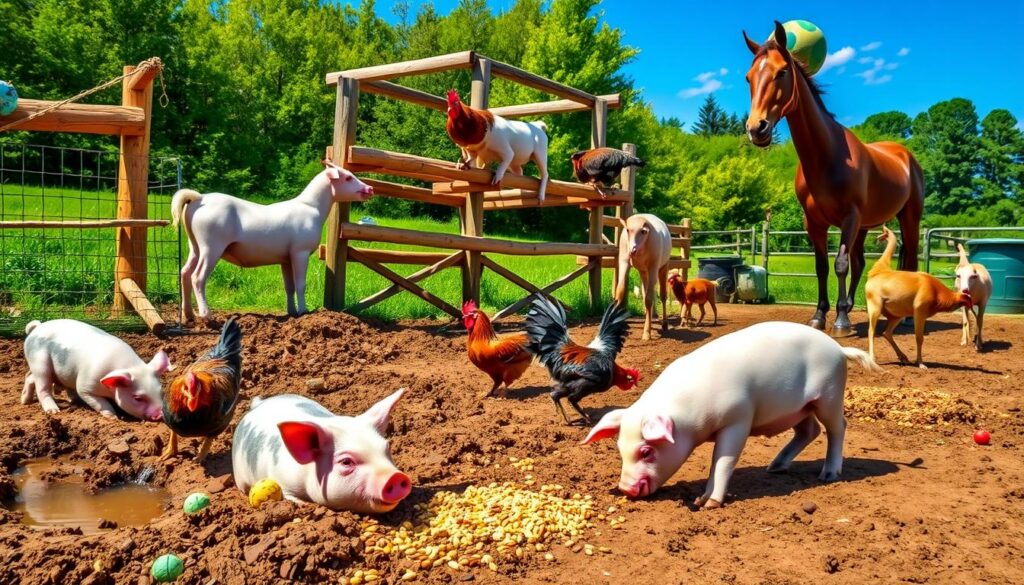
Specific Care for Popular Livestock
Taking care of livestock requires knowing their special needs. Every type, from cattle to poultry, has different needs for their health and productivity. Tailoring care for each animal boosts their welfare and your farm’s success.
Cattle and Their Needs
Cattle need careful attention to their surroundings despite their size and strength. They need a good shelter, clean water, and a nutrient-rich diet. Keeping their living area clean is critical to avoid health problems. Also, regular health checks and vaccines are key to disease prevention.
Goats and Sheep: Curious Companions
Goats and sheep enjoy being in groups and are quite curious. They love having varied terrain to explore and eat from. It’s important to check their coats and hooves regularly. Providing good food and friendship makes them happier and healthier.
Pigs: Social & Intelligent Animals
Pigs are smart and very social. They need space to roam and express their natural behaviors. They also need clean water and a diet full of vitamins and minerals. Interacting with people or other pigs reduces their stress and creates a happy place for them.
Poultry Enrichment Techniques
Poultry care is unique for them to flourish. They need enough room, fun activities, and a tidy space. Having different areas can lessen bird competition and support better social structures. It’s crucial to keep things clean and check the birds often to keep diseases away and keep your flock healthy and productive.
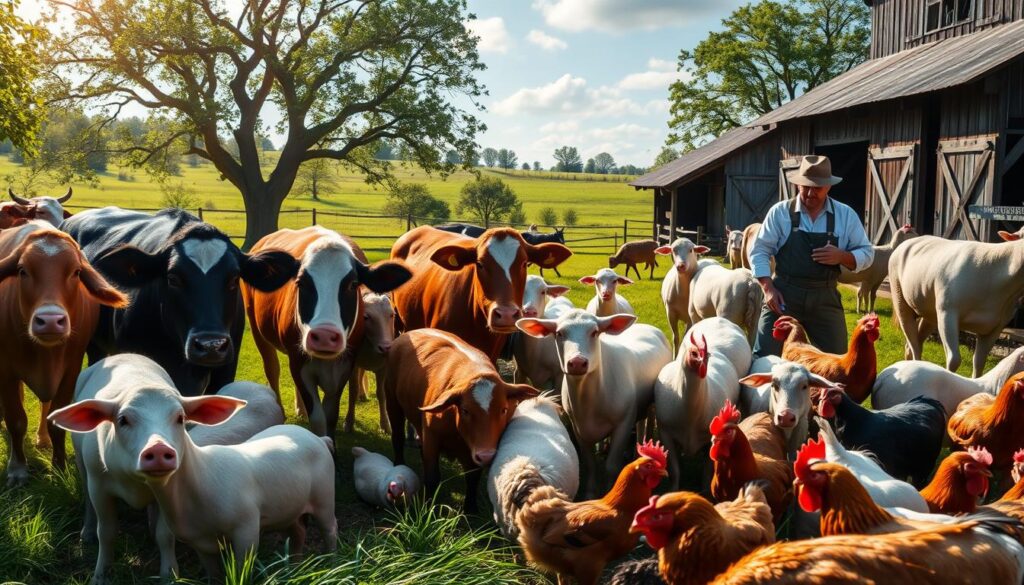
Effective Feeding Practices
It’s crucial to know effective feeding practices to keep your livestock healthy. Each type of animal needs a special diet based on its age and health. Using the right feeding methods ensures animals get top nutrition. This makes them healthier and more productive for your farm.
Understanding Animal Diets
Different animals need different types of food. For example, lactating dairy cows eat food with 32% to 38% undegradable protein. Beef and non-lactating dairy cows drink about 15 gallons of water daily. Pigs and horses require specific amino acids, like lysine. Following these feeding rules stops waste and improves feeding efficiency.
Feeding Techniques for Optimal Health
There are smart ways to feed animals to increase their health and production. Processing food by grinding or steam rolling can help. It is also important to feed animals in a way that reduces waste. For instance, don’t feed near water sources to avoid spillage. Studies show pigs can lose up to 20% of their food this way. Using these tips can boost animal health and save money.
| Animal Species | Daily Water Requirement | Protein Requirement |
|---|---|---|
| Lactating Dairy Cow | 15-35 gallons | 32%-38% undegradable protein |
| Non-lactating Dairy Cow | 15 gallons | Varies based on growth stage |
| Pigs | 3-5 gallons | Lysine as first limiting amino acid |
| Adult Horses | Up to 15 gallons | Calcium to phosphorus ratio of 2:1 for lactating mares |
| Adult Sheep | 1.5-3 gallons | Based on forage quality |
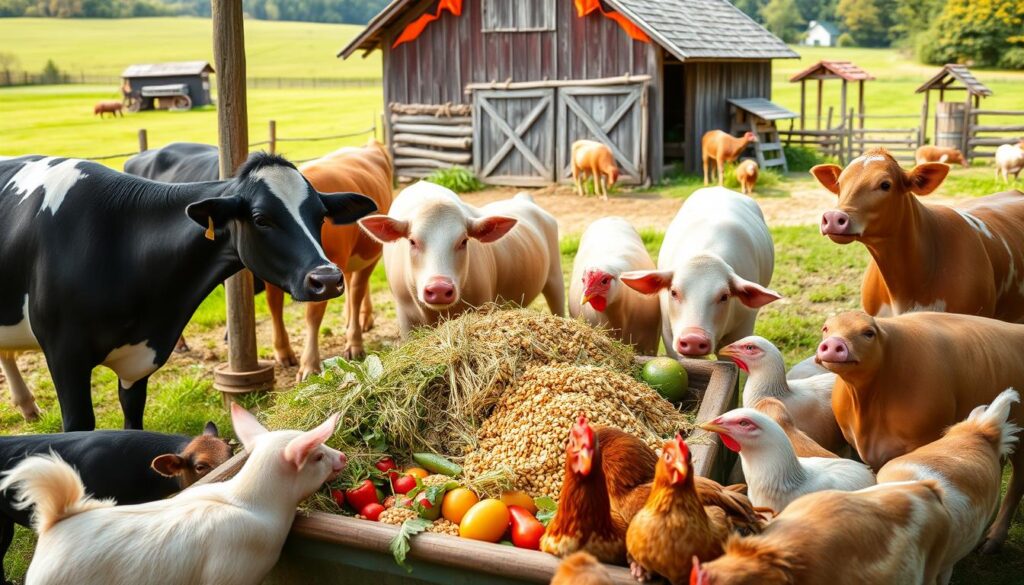
Maintaining Animal Health and Welfare
Managing your livestock well is key to their health and happiness. Making sure they’re healthy and their living spaces are clean prevents sickness and helps them do well. It’s important to watch them closely and use the right methods to keep them in good shape.
Regular Health Checks and Monitoring
It’s crucial to check your animals often. By doing regular health checks, you can spot problems before they get worse. This means watching their temperature, looking for signs of sickness, and keeping up with their shots. Getting them the right vet care stops disease from spreading in your group. Writing down what happens health-wise helps spot trends that could signal bigger issues.
- Watch how much they eat and drink to catch any appetite changes.
- Look them over for injuries or abnormalities.
- Keep up with vaccinations to fight off common diseases.
Daily Cleanliness and Sanitation Practices
Clean living conditions mean happier, healthier livestock. By keeping feeding spots and bedding clean, you lower disease risk. Good hygiene and biosecurity keep them safe, physically and mentally better.
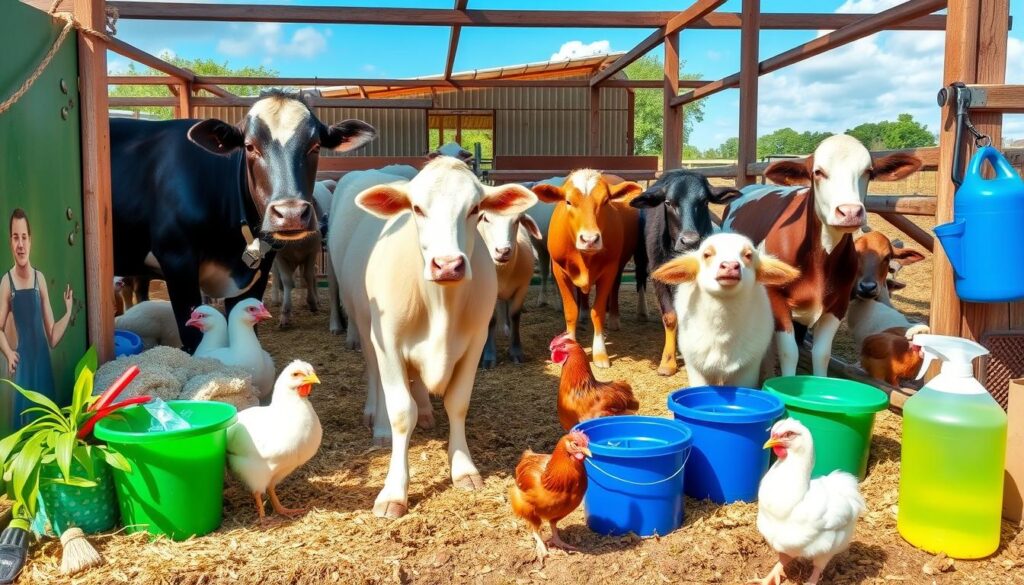
Make sure their homes have good drainage and air flow. This keeps things clean and cuts down on germ spread. Spending time on cleanliness helps them stay productive and keeps the quality of their products high. Adopting these habits makes a space where animals can thrive.
Building Safe and Secure Habitats
Making sure your animals have safe homes is key to their health. Knowing how to build their spaces is important. It keeps them safe and lowers stress, which can make them sick or less productive. Think about dangers like fire and how to design their stalls well. This helps everyone.
Avoiding Common Fire Hazards
It’s important not to forget fire safety for animal homes. Taking steps to prevent fires protects your animals and avoids big losses. Here’s how to keep their homes safe from fire:
- Regularly inspect electrical wiring for wear and tear.
- Store flammable materials away from animal housing.
- Ensure proper ventilation to minimize fire risks from heaters.
- Equip your facility with smoke detectors and fire extinguishers.
Choosing the Right Stall Design
Picking the right stall setup is vital for your animals’ comfort and safety. Think about what different animals need from their spaces. Good stall design is about:
- Ensuring ample space—roughly four times the body size of each animal during emergencies.
- Incorporating fans and proper ventilation systems to optimize air quality and keep the environment cool.
- Providing soft, warm bedding to protect livestock during cold weather.
- Implementing adequate water supply systems to ensure access during adverse conditions.
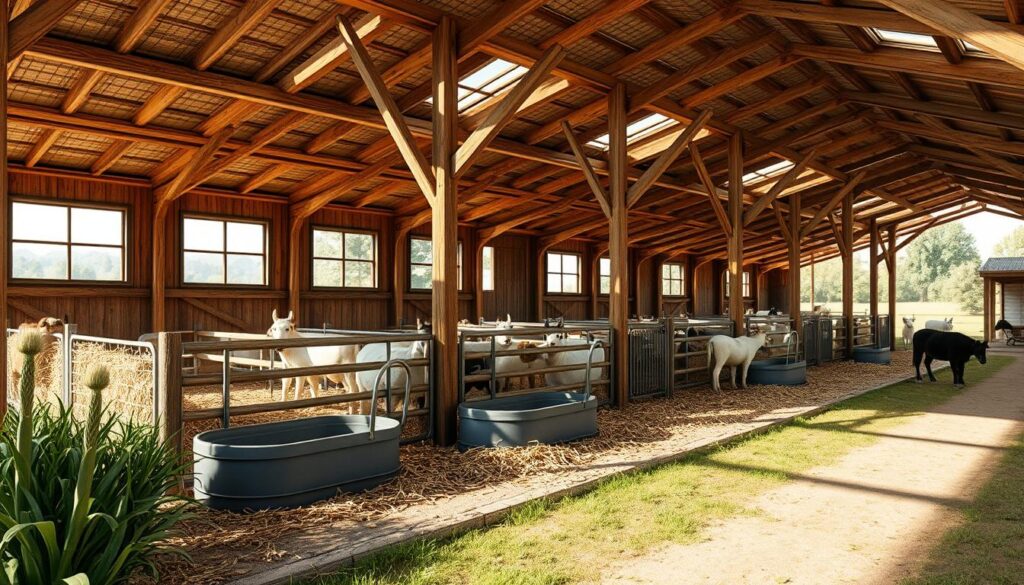
Understanding Life Cycles of Farm Animals
Exploring animal life cycles of farm animals offers key details about their growth and reproduction. This information is crucial for managing farm animals effectively. The cycle starts at birth, with calves, piglets, and chicks each needing special initial care.
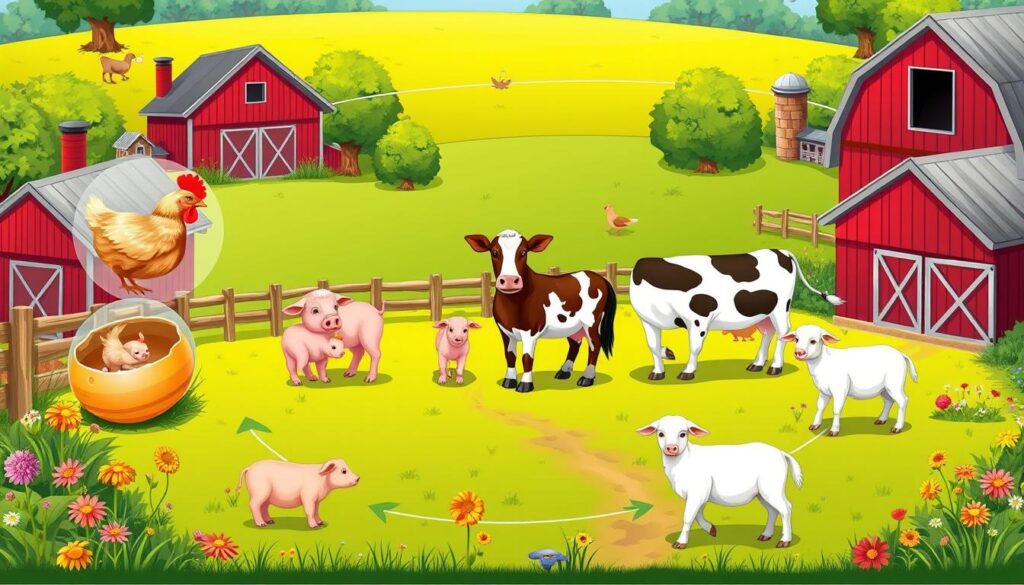
Grasping these stages is vital for making good breeding choices. It also helps keep your livestock healthy and productive. Here’s a quick look at the lifecycle stages for common farm animals:
| Animal | Birth Weight | Nutrition Phase | Market Weight | Lifecycle Duration |
|---|---|---|---|---|
| Beef Cattle | 150 – 450 lbs | Grass and grains | 1,200 – 1,300 lbs | 14 – 15 months |
| Holstein Calf | 90 – 100 lbs | Forage transitioning to grains | 1,500 lbs | 5 – 10 years |
| Jersey Calf | 42 – 72 lbs | Balanced diet for growth | 1,000 lbs | 5 – 10 years |
| Pigs | 2 – 3 lbs | Starting with milk, then grains | 240 – 300 lbs | 6 months to 1 year |
| Chickens | 1 – 2 oz | Starter feed to layer diet | 5 – 6 lbs | 5 – 6 months |
As farm animals grow, it’s important to watch their nutrition and health. Artificial insemination is often used during farm animal reproduction. This helps select the best breeds and improve herd quality. Knowing the lifecycle helps you meet your animals’ needs at each stage, making your farm practices more effective.
Conclusion
Good care for farm animals is key for their health and farm productivity. In this article, we’ve talked about important parts of livestock management. We highlighted the need for the right food, good living conditions, and health check-ups often.
Staying up-to-date and flexible is vital as farming faces challenges like climate change and high feed prices. Increases in waste and emissions from animals show why caring well for farm animals matters. When you farm in ways that are good for the environment, you help animals and our planet.
By focusing on the well-being of your animals and using the best methods, you shape agriculture’s future. Your dedication to looking after your livestock ensures a strong, productive farm for many years.

